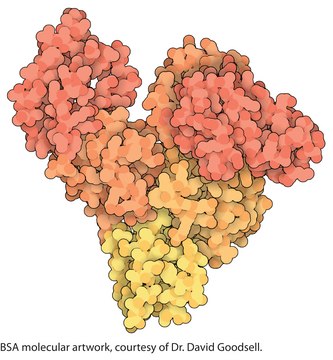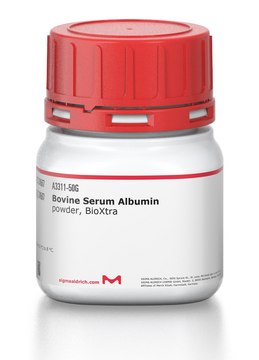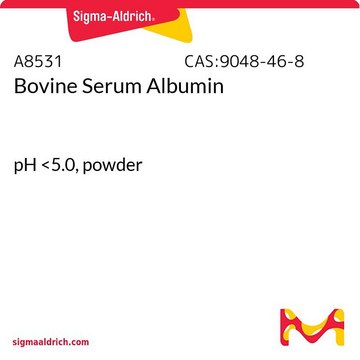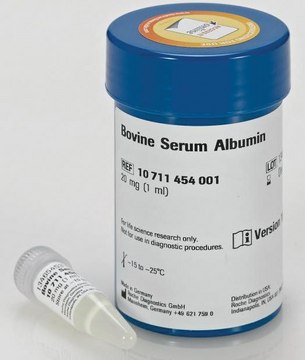A8654
Bovine Serum Albumin
dimer mol wt ~132 kDa
Synonym(s):
Albumin bovine serum, BSA, Bovine albumin
About This Item
Recommended Products
biological source
bovine
Quality Level
Assay
0.9-1.4 mg per vial protein basis (biuret)
form
lyophilized powder
mol wt
dimer ~132 kDa
monomer ~66 kDa
~66 kDa
purified by
cold ethanol fractionation
origin
USA origin
concentration
0.9—1.4 mg per vial protein (biuret)
technique(s)
protein purification: suitable
pH
5.2
storage temp.
−20°C
Looking for similar products? Visit Product Comparison Guide
Application
Biochem/physiol Actions
Preparation Note
Reconstitution
Storage Class Code
11 - Combustible Solids
WGK
WGK 1
Flash Point(F)
Not applicable
Flash Point(C)
Not applicable
Personal Protective Equipment
Regulatory Information
Choose from one of the most recent versions:
Certificates of Analysis (COA)
Don't see the Right Version?
If you require a particular version, you can look up a specific certificate by the Lot or Batch number.
Already Own This Product?
Find documentation for the products that you have recently purchased in the Document Library.
Our team of scientists has experience in all areas of research including Life Science, Material Science, Chemical Synthesis, Chromatography, Analytical and many others.
Contact Technical Service



